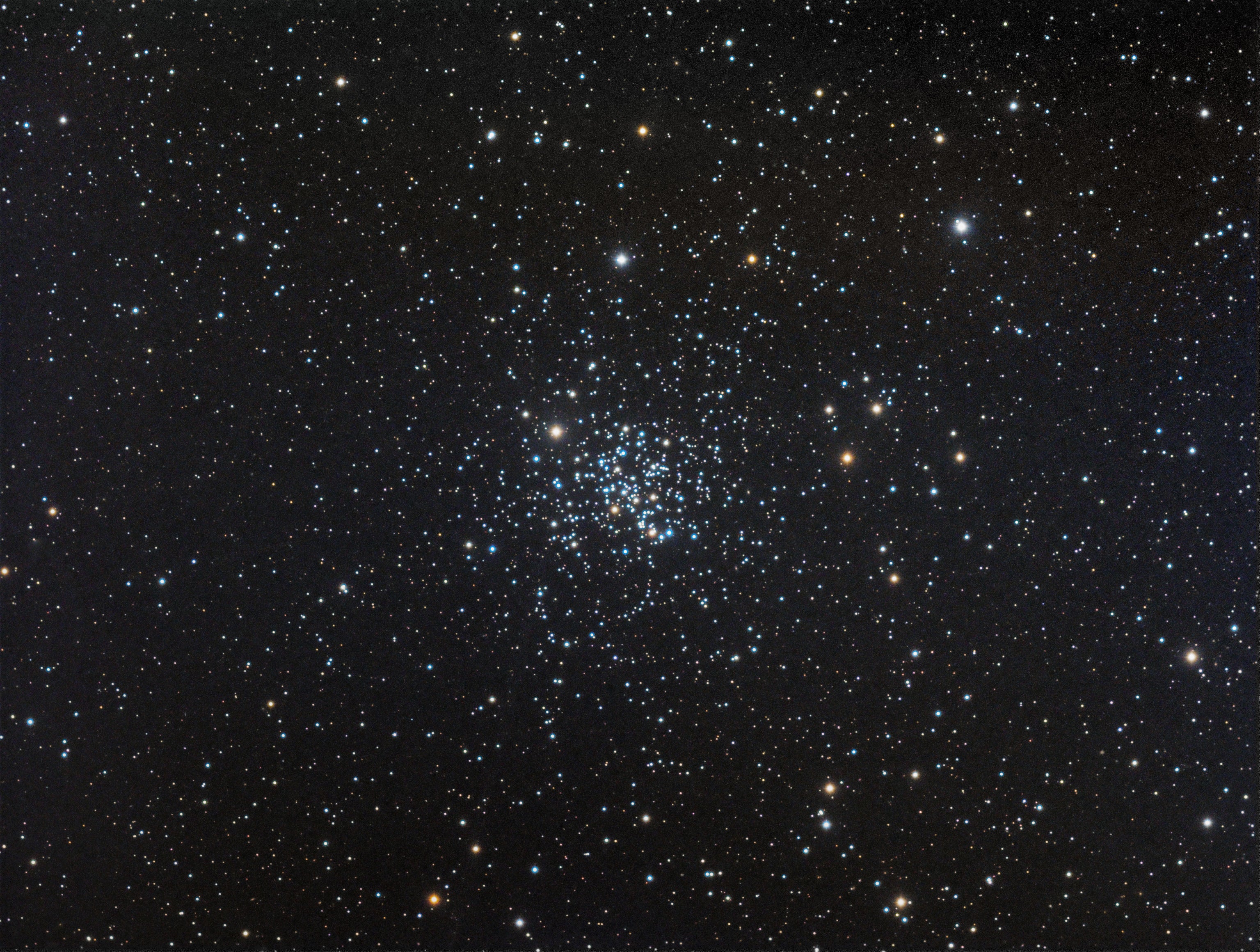
M67 is the second-best open cluster in the constellation Cancer the Crab. At magnitude 6.9, it’s outshone only by the Beehive Cluster (M44). It has a diameter of 29′, nearly the same as the Full Moon. You’ll find it easily through binoculars or a small telescope 1.7° due west of magnitude 4.3 Alpha (α) Cancri. It was first seen in 1779 by German astronomer Johann Gottfried Koehler.
Through a 4-inch telescope, you’ll resolve roughly two dozen stars in M67. Increase the aperture just to 6 inches, and 50 individual stars will shine forth. A dozen of these stars are brighter than 11th magnitude. As you observe M67, note the yellow star HIP 43519 on its northeastern edge. It glows at magnitude 7.8 but it doesn’t belong to the cluster; instead, it lies in the foreground.
M67 lies between 2,600 and 2,900 light-years away. And although astronomers know it’s an old cluster, they haven’t pinned down an exact age for it yet. Estimates range between 3.5 billion and 5.5 billion years, which make it the oldest nearby open cluster.
Estimates of its mass aren’t much more precise. Various researchers have pegged it somewhere between 1,100 and 1,400 solar masses. It contains at least 500 stars, of which about 100 are Sun-like. Another 150 are white dwarfs, and the remainder are red giants or blue stragglers.
Because of its age, M67 has no stars hotter than spectral type F. And as it continues to age, the hottest stars will eventually become G-type (like the Sun) and progressively cooler. And speaking of similarities to our star, a study of starspots on 20 of M67’s stars by the Leibniz Institute for Astrophysics Potsdam and Johns Hopkins University conducted in 2016 showed that they (and probably the vast majority of the stars in the cluster) rotate at the same rate as the Sun.









